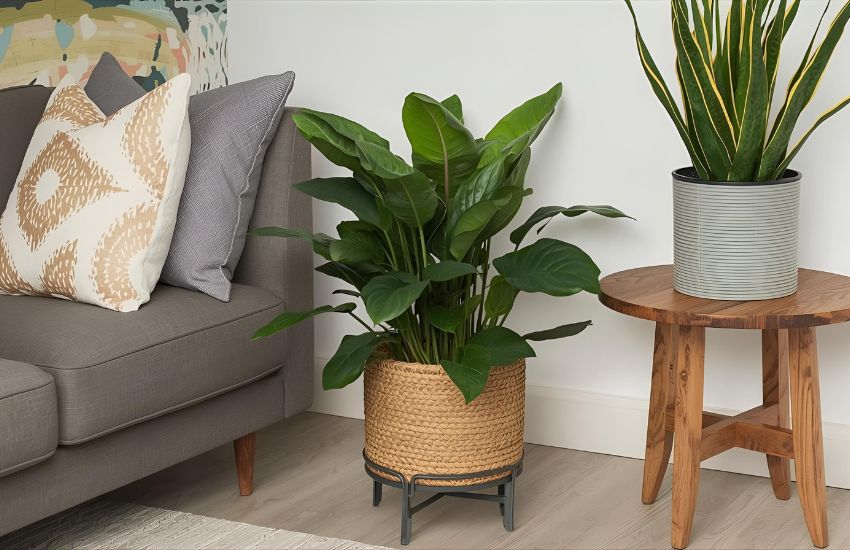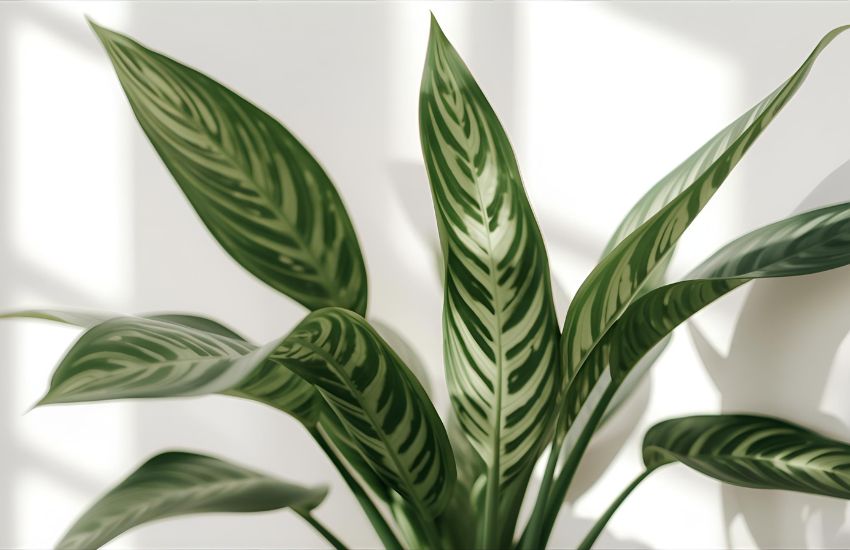Looking for a houseplant that combines beauty with calm, and stands out without overwhelming your space? The Calathea Prayer Plant offers exactly that—a stylish foliage display paired with gentle, meditative movement. Known for its daily folding leaves that rise at dusk, this plant from the marantaceae family adds subtle rhythm to your indoor environment. You’ll enjoy its patterned leaves while creating a soothing atmosphere ideal for work, rest, or reflection.
The Calathea Prayer Plant offers a perfect blend of beauty and tranquility for your indoor space. With its striking foliage and rhythmic leaf movement, it thrives in medium light, high humidity, and well-draining soil. Keep the soil slightly moist and avoid cold drafts. This medium-care plant adds style and serenity to any modern interior.
In this guide, you’ll learn how to fertilize effectively, how to manage humidity, and how to prevent common issues like leaf curl and browning. Whether you’re caring for a Calathea, rattlesnake, or another maranta, these tips will support a healthy, serene indoor space.
Calathea Prayer Plant Care: Soil, Water, and Humidity Tips Indoors

- The prayer plant calathea, known for its beautifully patterned leaves and the way its leaves move or fold upward at night, adds motion and tranquility to your indoor space.
- Use a rich, well-aerated potting mix with excellent drainage to avoid root rot—a blend of peat, perlite, and orchid bark is ideal.
- Always plant in a pot with a proper drainage hole to let excess water escape.
- Keep the soil consistently moist but never soggy—never allow the soil to dry out completely between waterings.
- Water with distilled water to avoid harmful mineral buildup from regular tap water.
- Maintain high humidity levels, as these indoor plants are native to tropical environments.
- Use a humidity tray, a room humidifier, or practice grouping plants together to increase ambient moisture naturally.
- If the air is too dry, you may notice browning tips on the green leaves.
- Calatheas—including the striking orbifolia variety—prefer indirect sunlight; avoid direct sunlight, which can scorch their wavy green leaves.
- These plants can adapt to lower light but grow best in bright, filtered light conditions.
- Be ready to repot your plant annually to refresh the indoor soil and accommodate root growth.
- As a pet-friendly houseplant, Calathea is safe for households with cats and dogs, making it both stylish and practical.
How to Repot and Fertilize Calatheas for Healthy Houseplants

Repotting Calatheas for Root Health
Repotting your Calathea is essential to support a healthy root system and promote the emergence of new leaves. Typically, you should repot every 12 to 18 months or when you notice roots circling the base of the container. Choose a slightly larger pot with drainage holes to prevent water from sitting at the bottom, which can lead to soggy soil and eventually root rot.
Use a well-draining potting mix made from peat, perlite, and coconut coir to help manage moisture. Gently remove the plant from its current pot, loosen the roots, and place it in the new container at the same depth. Keep the soil moist after repotting, but avoid oversaturation. For best results, maintain room temperatures around 60°F or warmer, as Calatheas prefer consistent warmth and humidity.
This is also the ideal time to propagate. Carefully divide healthy root clusters and pot them separately using the same soil and care routine. Position newly repotted plants in low to indirect light, as direct sunlight can damage their sensitive foliage. A little filtered morning sun may be tolerated, but strong rays should always be avoided.
How to Fertilize for Steady Growth
Feeding your Calathea properly will support lush foliage and vibrant patterns, such as the distinctive stripe markings found on many varieties. Apply a liquid fertilizer at half strength once every 4 to 6 weeks during the active growing season—spring through early fall. Avoid fertilizing during winter, when growth slows naturally.
Always use distilled water before and after fertilizing to prevent mineral buildup from standard tap water. Calatheas are sensitive to salts and chemicals, and using distilled alternatives can help maintain root health. If your plant begins to grow slowly or its colors fade, it may be signaling a need for additional nutrients.
Maintaining Moisture and Humidity Indoors
Humidity is a critical factor in Calathea care. While you can mist occasionally, it’s more effective to place your plant on a pebble tray filled with water or use a humidifier to ensure the air remains moist. This replicates the plant’s native tropical environment and helps prevent leaf edges from drying or curling.
Water when the soil surface becomes slightly dry to the touch, but avoid letting it dry out completely. Regular waterings are essential, but be careful not to overwater. These plants dislike both drought and oversaturation, requiring a balance to stay healthy.
Calatheas are admired not just for their beautifully patterned leaves but also for their daily leaf movements—called nyctinasty—where the leaves move upward at night. These gentle rhythms add serenity and visual interest to your home while aligning with feng shui principles of harmony and energy flow. With careful repotting, mindful fertilizing, and consistent humidity, your Calathea will thrive as a healthy and elegant indoor companion.
Conclusion
Caring for Calatheas is a rewarding journey when you understand their specific needs. These stunning houseplants, often adorned with a purple underside and intricate leaf patterns, respond best to consistent care, proper repotting techniques, and timely nutrition. Avoid placing your Calathea in much direct sunlight, as it can scorch the leaves and cause crispy leaf tips. Instead, choose a location with soft, filtered light and use porous soil to support healthy roots and proper moisture balance.
During the growing season, be sure to fertilize monthly using a balanced, diluted formula. Always water with rainwater or distilled water to protect sensitive roots from chemical buildup. Prevent issues like dryness, sudden droop, or gnat infestations by keeping a consistent watering schedule and taking time to inspect the plant regularly for changes in its health.
Most Calatheas reach around three feet tall, making them perfect for shelves, plant stands, or as grounding décor in a peaceful corner. With attention to humidity, light, and nourishment, you can enjoy the beauty of these graceful plants year-round.
Frequently Asked Questions (Calathea Prayer Plant – Medium Care Guide for a Stylish and Serene Indoor Space)
Why is the Calathea Prayer Plant a great choice for indoor spaces?
The Calathea Prayer Plant is admired for its decorative patterned leaves and unique nightly “prayer” movement when the foliage folds up. This natural beauty adds a stylish and serene touch to homes and offices, making it a popular indoor plant for creating a calming environment.
What light conditions are best for a Calathea Prayer Plant?
Calathea thrives in bright, indirect light and can also grow in medium-light conditions. Direct sunlight should be avoided, as it can fade or burn the delicate leaf patterns. Its adaptability makes it ideal for stylish indoor corners.
How often should you water and maintain humidity for Calathea?
Water the plant when the top inch of soil feels dry, ideally with filtered or distilled water. Since Calathea enjoys high humidity, regular misting, pebble trays, or a humidifier is recommended to keep its foliage healthy and vibrant.
What soil and fertilizer routine keeps Calathea thriving?
Use a well-draining, peat-based potting mix to support root health. Feed the plant with a diluted, balanced liquid fertilizer once a month during the growing season to encourage strong, lush growth while preventing nutrient overload.
